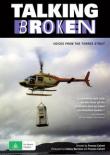AustLit
Latest Issues
AbstractHistoryArchive Description
'The Torres Strait Islanders are Australia’s ‘other’ Indigenous minority. They remained virtually unknown until 1988 when they made their brief claim for independence. Since first contact with whites in 1871, they have been controlled by benign but effective colonisers, which has left these islands between Papua New Guinea and the tip of the Cape York Peninsula curiously poised between the First and Third Worlds.
'TALKING BROKEN is a portrait of these Islanders which goes beyond a description of colonialism. The ‘broken’ of the title refers to Broken English, a pidgin spoken only by the Torres Strait Islanders. It also pinpoints another major problem experienced by most Indigenous cultures. Although they appear to keep up with ‘the system’, the hidden language of authorities from the mainland means that it is almost impossible to overcome welfare dependence.
'TALKING BROKEN is the result of three years research. Based on a relationship of friendship and trust, several Islanders talk with humour and intelligence about subjects as wide-ranging as independence, culture, tourism, sex, adoption and sorcery. The filmmakers were allowed to enter the Torres Strait reserves and filmed for two months with the support of many individual island communities. The film is a record of the encounter.'
Source: Ronin Films (distributor).
Publication Details of Only Known VersionEarliest 2 Known Versions of
Works about this Work
-
Screening Indigenous Australia : Space, Place and Media in Frances Calvert’s Talking Broken
2016
single work
criticism
— Appears in: Ilha Do Desterro : A Journal of English Language , vol. 69 no. 2 2016; 'Drawing on the fields of postcolonial studies and media theory, this article analyzes Frances Calvert’s 1990 documentary, Talking Broken, which, inter alia, looks at the role of space, place and media amongst Australia’s ‘other’ Indigenous minority, Torres Strait Islanders. The article explores the historical and geographical complexity of the space-place-media relation (particularly in terms of the centre-periphery relations between the Torres Strait and the Australian mainland), and considers the extent to which Calvert – after the Australian bicentenary of 1988 – is able to absorb and playfully challenge such formulations. More broadly, it considers the extent to which contemporary Indigenous media might go further and enact a shift from absorbing and challenging such formulations to taking control of media institutions themselves.' (Publication summary)
-
Screening Indigenous Australia : Space, Place and Media in Frances Calvert’s Talking Broken
2016
single work
criticism
— Appears in: Ilha Do Desterro : A Journal of English Language , vol. 69 no. 2 2016; 'Drawing on the fields of postcolonial studies and media theory, this article analyzes Frances Calvert’s 1990 documentary, Talking Broken, which, inter alia, looks at the role of space, place and media amongst Australia’s ‘other’ Indigenous minority, Torres Strait Islanders. The article explores the historical and geographical complexity of the space-place-media relation (particularly in terms of the centre-periphery relations between the Torres Strait and the Australian mainland), and considers the extent to which Calvert – after the Australian bicentenary of 1988 – is able to absorb and playfully challenge such formulations. More broadly, it considers the extent to which contemporary Indigenous media might go further and enact a shift from absorbing and challenging such formulations to taking control of media institutions themselves.' (Publication summary)




